The ancient Greeks attached great importance to physical fitness, believing that a proportionally folded athletic body is an integral part of a harmoniously developed personality, along with a rich spiritual world.
Any educational process in Ancient Greece, including sports training, was carried out in any corner of Hellas. These trainings were aimed at developing the strength, agility and endurance of young Greeks, who proudly showed their pumped-up torsos to others.
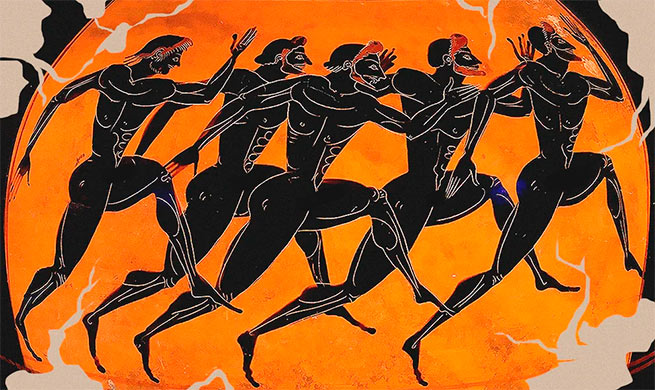
Palaestra and gymnasiums
Athletes trained in special institutions called palestras and gymnasiums. In the palestras, not only trainings were held, but also classes in philosophy, rhetoric and other disciplines. This is a place where both the body and the mind have been trained. In gymnasiums, only sports classes were held.
In such “schools” there were open-air courtyards surrounded by columns. In the courtyards there were either jogging tracks or special pits for practicing martial arts. In addition, the buildings contained baths, hot and cold baths, as well as jogging tracks in case of bad weather. The buildings were decorated with statues of Apollo, the god of light and the arts, and Hermes, the god of speed – he was especially revered by pentathletes and runners.
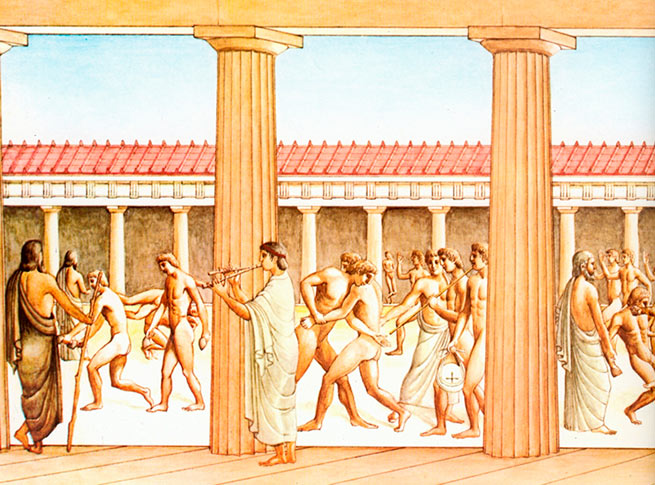
However, in addition to training, an important role in physical education was played by a balanced diet developed by Dromeus, a multiple winner of the ancient Olympic Games. Proper nutrition, including meat, protein products, vegetables, fruits, aromatic herbs and diluted wine, helped to gain muscle mass and quickly recover from injuries. They did not drink milk – it was a product for the peasants.

The basis of sports training was free weight exercises, such as cobblestones, sandbags, and even artiodactyl cattle. These exercises allowed the sons of Hellas to develop their bodies and become the owners of the strength of Hercules.
We have received evidence in the form of dumbbells themselves and images on vases, bowls and jugs. Also in their works, these dumbbells were described by the ancient Greek physician Galen and the geographer Pausanias. The first mentions date back to 708 BC. All this can be seen in museums dedicated to Ancient Greece.
The Greeks also became the inventors of the dumbbell, which used to be called “halteres”. They were 1.5-2 kilogram stone, lead or iron cannon balls connected by a handle, used in ancient powerlifting and long jump training.
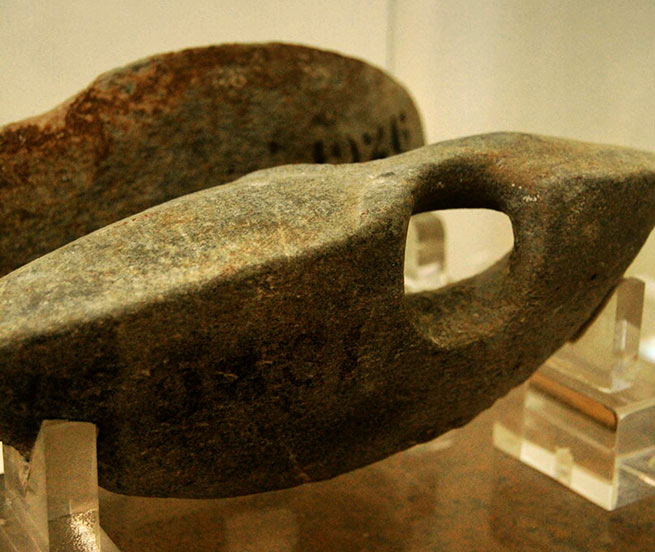
In Greek, this dumbbell was called “ἁλτῆρες” (from the word “ἅλλομαι”, which means jump). In Latin and English, this word sounds like Halteres. This word is also called the halteres of insects. Flying insects have a body part called halteres. They were given this name because they resemble dumbbells in their shape. This name was fixed in French and now the dumbbell in French will be – haltère.
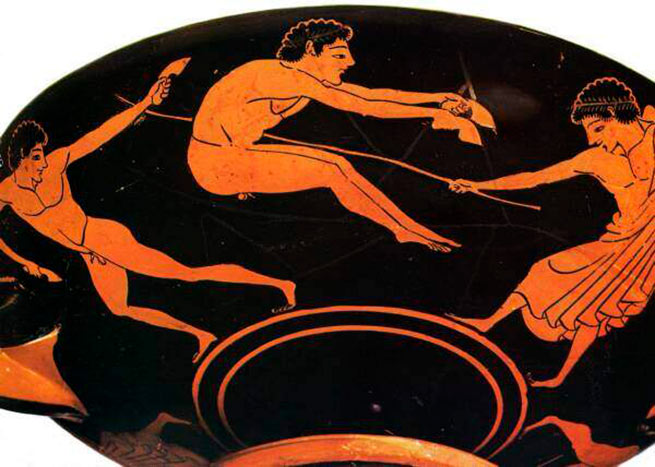
This picture shows a jump. It can be seen that the athlete brings his hands far forward. A flutist was always present at the competitions, who set the pace with his music. In addition to the result itself (the length of the jump), the judges also evaluated the beauty of the performance.

To involve more muscle fibers, the Greeks raised huge stones, in which they made a hole for convenience – a handle. Examples of such stones are two cobblestones with commemorative records that have survived to this day. One of them weighs 143.5 kg and is stored in the museum of the city of Olympia, it is inscribed “Bibon, son of Fol, raised me above his head with one hand.”
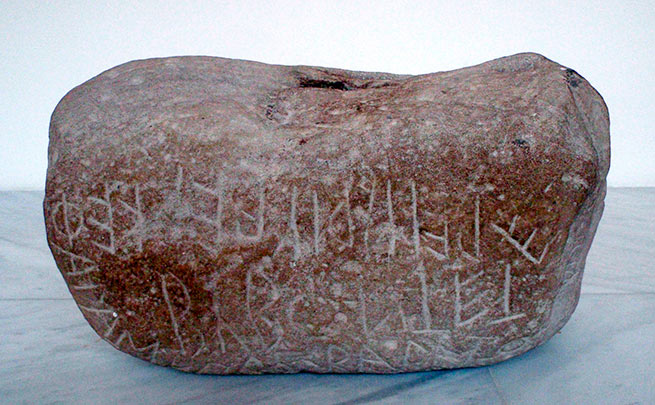
Bibon stone
Another huge block weighing 480 kg of black volcanic stone, found on the island of Santorini, is inscribed: “Eumastus son of Critobulus lifted me up from the ground“.
Modern athletes recognize that the ancient Greeks were the first to use a progressive load in the training process. This means that each subsequent approach to the exercise should be accompanied by a gradual increase in the severity or complexity of the exercise. The continuity and duration of the impact of the load were also important components of this technology.
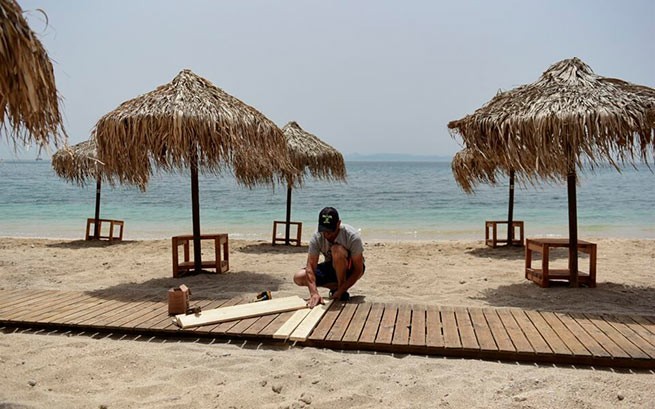


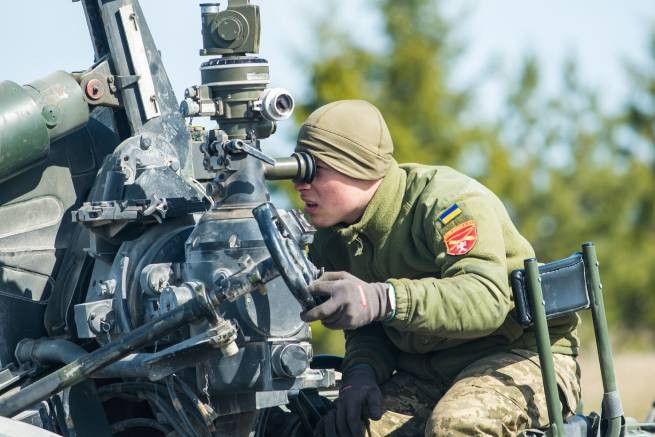

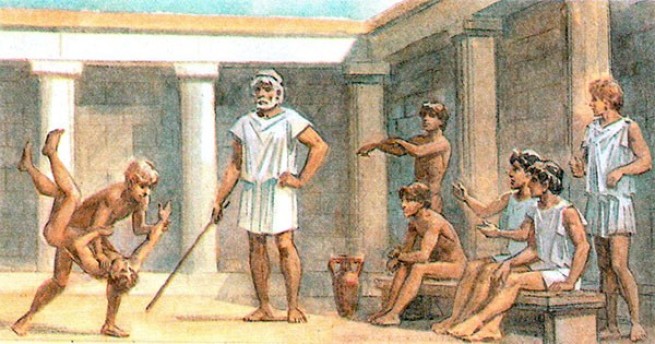

More Stories
57 years ago, a junta of black colonels came to power in Greece.
On April 10, 1821, the Turks hanged Patriarch Gregory V at the Phanar gates
How did married couples divorce in Ancient Greece? Difference with modern divorces